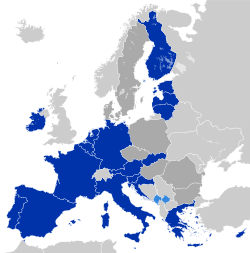Issues
Air pollution
A report from the European Environment Agency shows that road transport remains Europe's single largest air polluter. [1]
National Emission Ceilings (NEC) for certain atmospheric pollutants are regulated by NECD Directive 2001/81/EC (NECD). [2] As part of the preparatory work associated with the revision of the NECD, the European Commission is assisted by the NECPI working group (National Emission Ceilings – Policy Instruments). [3]
Directive 2008/50/EC of the European Parliament and of the Council of 21 May 2008 on ambient air quality and cleaner air for Europe (the new Air Quality Directive) has entered into force on 11 June 2008. [4]
Individual citizens can force their local councils to tackle air pollution, following an important ruling in July 2009 from the European Court of Justice (ECJ). The EU's court was asked to judge the case of a resident of Munich, Dieter Janecek, who said that under the 1996 EU Air Quality Directive (Council Directive 96/62/EC of 27 September 1996 on ambient air quality assessment and management [5] ) the Munich authorities were obliged to take action to stop pollution exceeding specified targets. Janecek then took his case to the ECJ, whose judges said European citizens are entitled to demand air quality action plans from local authorities in situations where there is a risk that EU limits will be overshot. [1]
Legislation
Since the late 1970s, the European Union's (EU) policy has been to develop and drive appropriate measures to improve air quality throughout the EU. The control of emissions from mobile sources, improving fuel quality and promoting and integrating environmental protection requirements into the transport and energy sector are part of these aims.
The main advising agency of the EU is the European Environment Agency (EEA). It came into force in 1993, after the decision to locate the EEA in Copenhagen. Work started in earnest in 1994. The EEA's mandate is to help the community and member countries make informed decisions about improving the environment and integrating environmental considerations into economic policies and to coordinate the European environment information and observation network (Eionet). Eionet is a partnership network across member states involving approximately 1000 experts and more than 350 national institutions. The network supports the collection and organization of data and the development and dissemination of information concerning Europe's environment.
Climate change

Effects on European countries include warmer weather and increasing frequency and intensity of extreme weather such as heat waves, bringing health risks and effects on ecosystems. European countries are major contributors to global greenhouse gas emissions, although the European Union and governments of several countries have outlined plans to implement climate change mitigation and an energy transition in the 21st century, the European Green Deal being one of these.
Public opinion in Europe shows concern about climate change; in the European Investment Bank's Climate Survey of 2020, 90% of Europeans believe their children will experience the effects of climate change in their daily lives. [10] Climate change activism and businesses shifting their practices has taken place in Europe.










